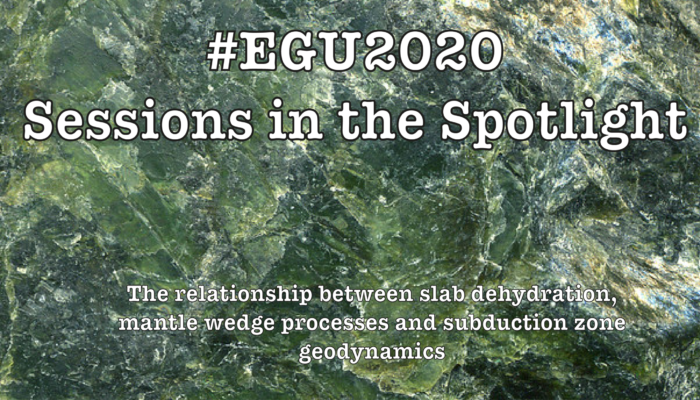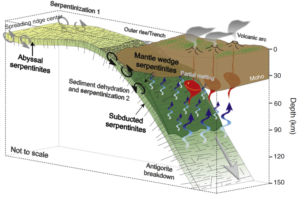
Now that we are 6 weeks out from the EGU2020 abstract deadline, it’s a great time to choose your session and write an abstract! Because, lets be honest, nobody wants to be writing an abstract over the Christmas holidays… Every few days, we will be highlighting a session in the Geochemistry, Mineralogy, Petrology and Volcanology section, to help make your session choice as easy as possible!
Today, we are thinking about fluids. If we don’t stay well hydrated, we get headaches (at least I do). If the mantle above a downgoing plate doesn’t stay well hydrated, we don’t get arc volcanism. You decide whether the first or the second thing is more important! The convenors of session GMPV 2.3 – Francesca Piccoli (Bern), José Alberto Padrón-Navarta (Montpelier) and Carla Tiraboschi (Münster), and their invited speaker – Bruno Reynard (Lyon) probably think the latter, and they would like you to join them in Vienna.
They say:
The release of fluids from the subducting slab is considered to be a key process for subduction zone geodynamics, from controlling arc volcanism, to seismicity and tectonic exhumation. High-pressure slab fluids are major vectors of mass transfer to the mantle wedge and significantly contribute to the element cycling. However, many details of fluid composition and mechanism of fluid expulsion are yet to be thoroughly understood.
Schematic sketch illustrating the geological environment during slab hydration (serpentinization) as well as the relationship between slab dehydration, mantle wedge processes and arc volcanism (from Deschamps et al. (2013))
Subducted serpentinites are considered the main source of water and also carry redox sensitive elements such as C and S. During dehydration, C-S bearing aqueous fluids can react with other slab lithologies and/or mantle wedge in a process that, ultimately, influence the redox budget of the mantle, and govern the physico-chemical evolution of magmas in the Earth’s lithosphere. In this session, we foster cross-disciplinary collaboration among petrologists and geochemists to probe and integrate petrological and geochemical approaches to comprehend subduction zone fluids composition and dynamics of fluid expulsion/fluid rock interactions. We welcome contributions addressing research that tackles geochemical, petrological, micro-structural and experimental constrains of the dynamics of fluid-mediated processes that contribute to mass transfer and volatile cycling in subduction zones.
Fancy joining in the conversation? Then submit an abstract here! And don’t forget to stay hydrated! (I’m talking to you, mantle wedge)

